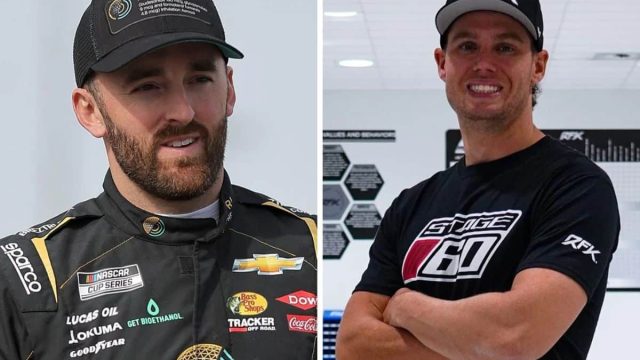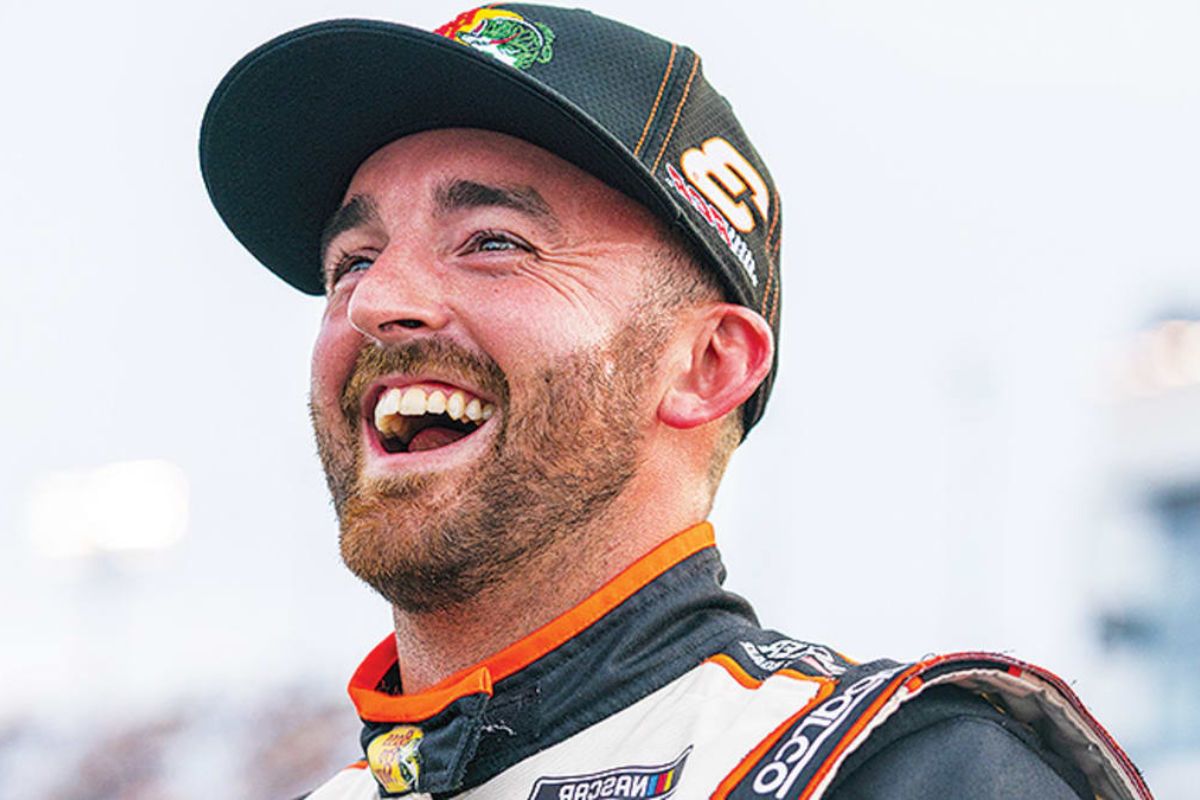Austin Dillon Criticizes Cam Waters: In the aftermath of the tumultuous Sonoma Raceway event, Austin Dillon‘s pointed critique of Cam Waters‘ aggressive driving has ignited a heated debate within the NASCAR community. Dillon, who was forced to retire early due to a fire triggered by a multi-car collision, attributed the chaos directly to Waters’ reckless actions. This incident not only highlights the inherent unpredictability of motorsports but also raises significant questions about the balance between competitive aggression and sportsmanship. As the discourse unfolds, it becomes crucial to consider how such actions influence race outcomes and the broader implications for driver conduct on the track.
Key Highlights
- Austin Dillon blamed Cam Waters for aggressive driving leading to a multi-car collision at Turn 11.
- Dillon’s critique highlighted the significant impact of Waters’ decisions on race outcomes.
- The incident caused Dillon’s car to catch fire, forcing a premature exit from the race.
- Dillon’s comments stressed the need for better strategic decision-making in high-stakes situations.
- Fans’ social media reactions were largely critical of Dillon’s performance and continued presence in NASCAR.
Introduction and Overview of DNFs
Conquering the treacherous conditions at Sonoma Raceway, the NASCAR Cup Series witnessed an unusually high number of DNFs, with seven drivers—including Josh Berry, Justin Haley, Cam Waters, Denny Hamlin, Ty Gibbs, Austin Dillon, and Chase Briscoe—falling victim to the challenging track. The recent repaving of the circuit provided increased grip, altering the dynamics and placing additional demands on the drivers and their vehicles. While this could be seen as an opportunity to push boundaries, it also led to an array of incidents that resulted in the premature end of the race for several competitors.
Josh Berry, a formidable contender, met an untimely exit, highlighting the unpredictability of motorsport. Similarly, Justin Haley and Chase Briscoe, both known for their resilience and tactical skills, found themselves sidelined. The attrition did not stop there; Cam Waters, a part-time driver for RFK Racing, also succumbed to the track’s unforgiving nature. Austin Dillon’s retirement from race further compounded the drama, given his subsequent outspoken critique of Waters’ competence.
Ty Gibbs and Denny Hamlin, each facing their own set of challenges that emphasized the track’s difficulty. The high attrition rate at Sonoma pointed out not just the physical demands placed on the machinery but also the mental and strategic skills required from the drivers. While some struggled to adapt to the new conditions, others, like Kyle Larson, excelled, securing a remarkable third win of the season.
A Massive Collision at Turn 11
Cam Waters wished for a better first race at Sonoma. He was driving RFK Racing’s No. 60 Ford Mustang Dark Horse and was just outside the top 10 in Stage 2. Unfortunately, he got involved in an incident at Turn 11 hairpin. The incident was initiated when Bubba Wallace, after running off track at Turn 10, rejoined the race from the left side. This action forced Josh Berry of Stewart-Haas Racing to shift right. In the process, Berry’s No. 4 Ford clipped Erik Jones’ vehicle, setting off a chain reaction that included several competitors.
Berry’s car subsequently made contact with Christopher Bell’s #20 Toyota, causing significant damage. The chaotic scene culminated with Berry’s vehicle striking the side of Martin Truex Jr.’s car, aggravating the turmoil at the hairpin turn. The consequences of this collision were immediate and severe, with multiple drivers experiencing abrupt changes in their race trajectories.
Domino Effect and Impact on Drivers
The collision at Turn 11 created a highlight effect, leading to a series of subsequent incidents that greatly influenced the race outcomes for several drivers as Martin Truex made contact with Cam Waters. This collision caused Waters to lose control, subsequently hitting Austin Dillon’s No. 3 Chevrolet Camaro ZL1. The impact on Dillon’s vehicle was catastrophic, causing it to spin on track and igniting a fire under the left door, abruptly ending Dillon’s race.
The consequences of this chaotic incident spread through the field, altering the dynamics and outcomes for multiple drivers. Dillon’s premature exit not only removed a competitive car from the race but also created a hazardous situation that necessitated immediate safety interventions. The fire under Dillon’s car highlighted the severity of the collision, emphasizing the physical and mechanical toll such incidents can impose.
Meanwhile, Cam Waters, despite being a central figure in the collision chain, managed to continue racing. He even gained three positions, momentarily stabilizing at 31st place after the restart for the third and final stage. However, this was not to last, as Waters was eventually forced into the pit lane, effectively ending any hopes of a significant recovery. This sequence of events demonstrates the unpredictable nature of motorsports, where a single collision can have cascading effects, dramatically altering the strategies and fortunes of numerous competitors.
Austin Dillon’s Post-Race Reaction
Amid the chaos and cascading effects of the Turn 11 collision, Austin Dillon’s post-race comments revealed his frustration and pointed critique of Cam Waters’ driving decisions. Speaking to journalist Bob Pockrass, Dillon detailed the sequence of events that led to the incident, highlighting his dissatisfaction with the conduct of his competitors, particularly Waters.
“You know, I was in a really good place strategy-wise it felt like. Tried to come off Turn 7, I was side-by-side with the #99. Then the #23 got him outside, we raced all the way side-by-side. Then the #60, the whole time he was way over his head. He got me through Turn 10, three wide going into Turn 11, which we have made it out of that, but yeah. #43, I don’t know what that is, he struggled all weekend.” – (Dillon)
Dillon began by expressing confidence in his race strategy, indicating he felt well-positioned prior to the chaos. He recounted his battle with the #99 and #23 cars, emphasizing the intensity and proximity of their side-by-side racing. However, it was the actions of the #60 car, piloted by Cam Waters, that drew Dillon’s ire. He described Waters’ driving as aggressive and ill-considered, stating, ‘the whole time he was way over his head.’
Austin Dillon felt he was in a good position until a frustrating Turns 10-11 resulted in enough damage to end his day. pic.twitter.com/EMpzPMxwGG
— Bob Pockrass (@bobpockrass) June 9, 2024
The critical moment came as the cars approached Turn 10 and then Turn 11, where Waters’ attempt to go three-wide resulted in significant on-track repercussions. Dillon’s narrative suggests that Waters’ lack of control and overzealous driving precipitated the multi-car incident, disrupting the race for numerous participants. Dillon’s discontent was noticeable as he referenced the struggle of another car, the #43, implying that its performance woes compounded the chaotic scenario.
Fans’ Reactions on Social Media
Social media platforms erupted with reactions from NASCAR fans following Austin Dillon’s dramatic exit from the Sonoma race. As the driver of the iconic RCR #3 car, once piloted by the legendary Dale Earnhardt, Dillon’s performance has been under intense scrutiny. The recent incident, wherein his car was engulfed in flames, added fuel to the ongoing debate about his place in the NASCAR Cup Series.
A significant number of fans expressed their dissatisfaction with Dillon on platforms like X. Reflecting a broader sentiment, one user sarcastically questioned, “How long until Austin Dillon loses his ride?” This comment highlights a recurring critique: many believe Dillon’s position is a product of nepotism, given his relationship with Richard Childress, rather than merit.
Currently ranked 30th with a dreadful season comprising just two top-10 finishes in 16 races, Dillon’s struggles are well-documented. Fans have not been shy about voicing their discontent, with some labeling his season as a “Austin Dillon and the season from hell”.
Despite the Sonoma incident being beyond his control, the reaction was largely unsympathetic. Posts such as “He needs to give up lol,” “Thanks Josh Berry,” and “Perfect 👍” depict the frustration among a section of the fanbase that questions Dillon’s competency.
The polarized reactions highlight a deeper discussion about performance, legacy, and opportunity within NASCAR. While some fans remain supportive, the prevailing sentiment on social media post-Sonoma reflects a growing impatience with Dillon’s results.
News in Brief: Austin Dillon Criticizes Cam Waters
The chaotic events at Sonoma Raceway, highlighted by Austin Dillon’s outspoken criticism of Cam Waters, emphasize the significant consequences of aggressive driving tactics in motorsports.
Dillon’s comments draw attention to the broader implications of such actions, influencing race outcomes and raising questions about sportsmanship and strategic decision-making within NASCAR. This incident serves as a reminder of the delicate balance required to navigate the competitive and unpredictable nature of racing.
Our Reader’s Queries
Q. Has Austin Dillon won a Cup race?
A. Dillon has secured four victories in the NASCAR Cup Series, including a memorable win in the 2018 Daytona 500. He has also qualified for the NASCAR Playoffs five times (2016-18, 2020, and 2022). Additionally, while it doesn’t count toward his career win total, Dillon claimed victory in the 2021 Bluegreen Vacations Duel 2 race at Daytona International Speedway.
Q. Who is Austin Dillon’s friend?
A. Austin Dillon’s Life In The Fast Lane” provides an inside look at the life of Paul Swan, a Richard Childress Racing pit crew member, as he supports his best friend, professional NASCAR driver Austin Dillon. However, it raises the intriguing question of how well Swan would perform if their roles were reversed.
Q. Who was Austin Dillon’s wife a cheerleader for?
A. Austin Dillon has been married since 2017 and is a proud father of two. His wife, Whitney Ward Dillon, boasts an impressive background as a former NFL cheerleader for the Tennessee Titans.
ALSO READ: Austin Dillon’s Struggles Upset Dale Earnhardt Fans



